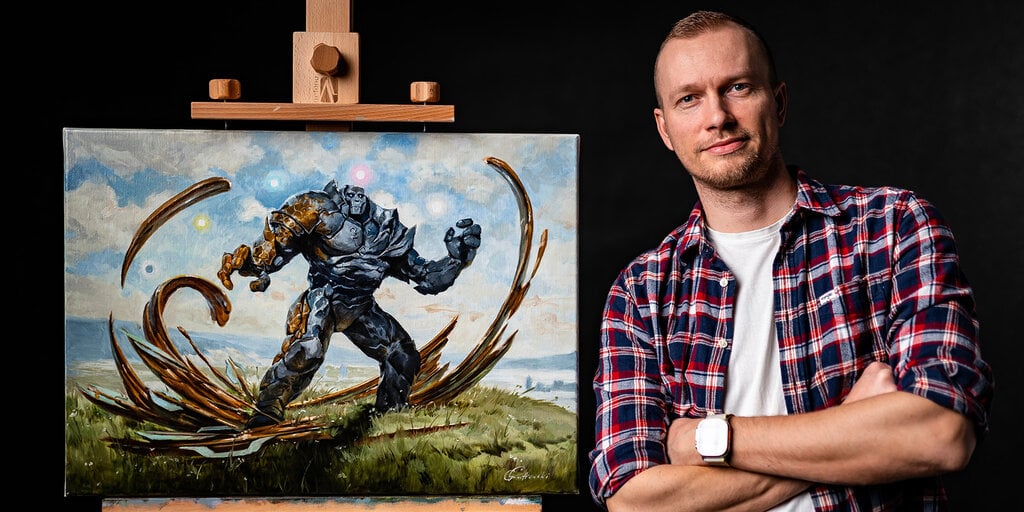Greg Rutkowski, a digital artist known for his surreal style, opposes AI art but his name and style have been frequently used by AI art generators without his consent. In response, Stable Diffusion removed his work from their dataset in version 2.0. However, the community has now created a tool to emulate Rutkowski’s style against his wishes using a LoRA model. While some argue this is unethical, others justify it since Rutkowski’s art has already been widely used in Stable Diffusion 1.5. The debate highlights the blurry line between innovation and infringement in the emerging field of AI art.



no one’s art is being “stolen”. you’re mistaken.
That’s true, but only in the sense that theft and copyright infringement are fundamentally different things.
Generating stuff from ML training datasets that included works without permissive licenses is copyright infringement though, just as much as simply copying and pasting parts of those works in would be. The legal definition of a derivative work doesn’t care about the techological details.
(For me, the most important consequence of this sort of argument is that everything produced by Github Copilot must be GPL.)
That’s incorrect in my opinion. AI learns patterns from its training data. So do humans, by the way. It’s not copy-pasting parts of image or code.
AI doesn’t “learn” anything, it’s not even intelligent. If you show a human artwork of a person they’ll be able to recognize that they’re looking at a human, how their limbs and expression works, what they’re wearing, the materials, how gravity should affect it all, etc. AI doesn’t and can’t know any of that, it just predicts how things should look based on images that have been put in it’s database. It’s a fancy Xerox.
Why do people who have no idea how some thing works feel the urge to comment on its working? It’s not just AI, it’s pretty much everything.
AI does learn, that’s the whole shtick and that’s why it’s so good at stuff computers used to suck at. AI is pretty much just a buzzword, the correct abbreviation is ML which stands for Machine Learning - it’s even in the name.
AI also recognizes it looks at a human! It can also recognize what they’re wearing, the material. AI is also better in many, many things than humans are. It also sucks compared to humans in many other things.
No images are in its database, you fancy Xerox.
And I wish that people who didn’t understand the need for the human element in creative endeavours would focus their energy on automating things that should be automated, like busywork, and dangerous jobs.
If the prediction model actually “learned” anything, they wouldn’t have needed to add the artist’s work back after removing it. They had to, because it doesn’t learn anything, it copies the data it’s been fed.
Just because you repeat the same thing over and over it doesn’t become truth. You should be the one to learn, before you talk. This conversation is over for me, I’m not paid to convince people who behave like children of how things they’re scared of work.
deleted by creator
You’re correct in your description of what a derivative work is, but this part is mistaken:
The intent is “to promote the progress of science and the useful arts” so that, in the long run, the Public Domain is enriched with more works than would otherwise exist if no incentive were given. Allowing artists to make a living is nothing more than a means to that end.
deleted by creator
I like what you’re saying so I’m not trying to be argumentative, but to be clear copyright protections don’t simply protect those who make a living from their productions. You are protected by them regardless of whether you intend to make any money off your work and that protection is automatic. Just to expand upon what @grue was saying.
It’s actually not copyright infringement at all.
Edit: and even if it was, copyright infringement is a moral right, it’s a good thing. copyright is theft.
Except when it’s being used to enforce copyleft.
deleted by creator
No. And it’s not just me saying that; the folks who wrote the Copyright Clause (James Madison and Thomas Jefferson) would disagree with you, too.
The natural state of a creative work is for it to be part of a Public Domain. Ideas are fundamentally different from property in the sense that property’s value comes from its exclusive use by its owner, wheras an idea’s value comes from spreading it, i.e., giving it away to others.
Here’s how Jefferson described it:
Thus we see the basis for the rationale given in the Copyright Clause itself: “to promote the progress of science and the useful arts,” which is very different from creating some kind of entitlement to creators because they “deserve” it.
The true basis for copyright law in the United States is as a utilitarian incentive to encourage the creation of more works - a bounty for creating. Ownership of property is a natural right which the Constitution pledges to protect (see also the 4th and 5th Amendments), but the temporary monopoly called copyright is merely a privilege granted at the pleasure of Congress. Essentially, it’s a lease from the Public Domain, for the benefit of the Public. It is not an entitlement; what the creator of the work “deserves” doesn’t enter into it.
And if the copyright holder abuses his privilege such that the Public no longer benefits enough to be worth it, it’s perfectly just and reasonable for the privilege to be revoked.
This is a bizarre, backwards argument. First of all, a government-granted monopoly is the antethesis of the “free market” upon which capitalism is supposedly based. Second, granting of monopolies is hardly the only way to accomplish either goal of “promoting the progress of science and the useful arts” or of helping creators make a living!